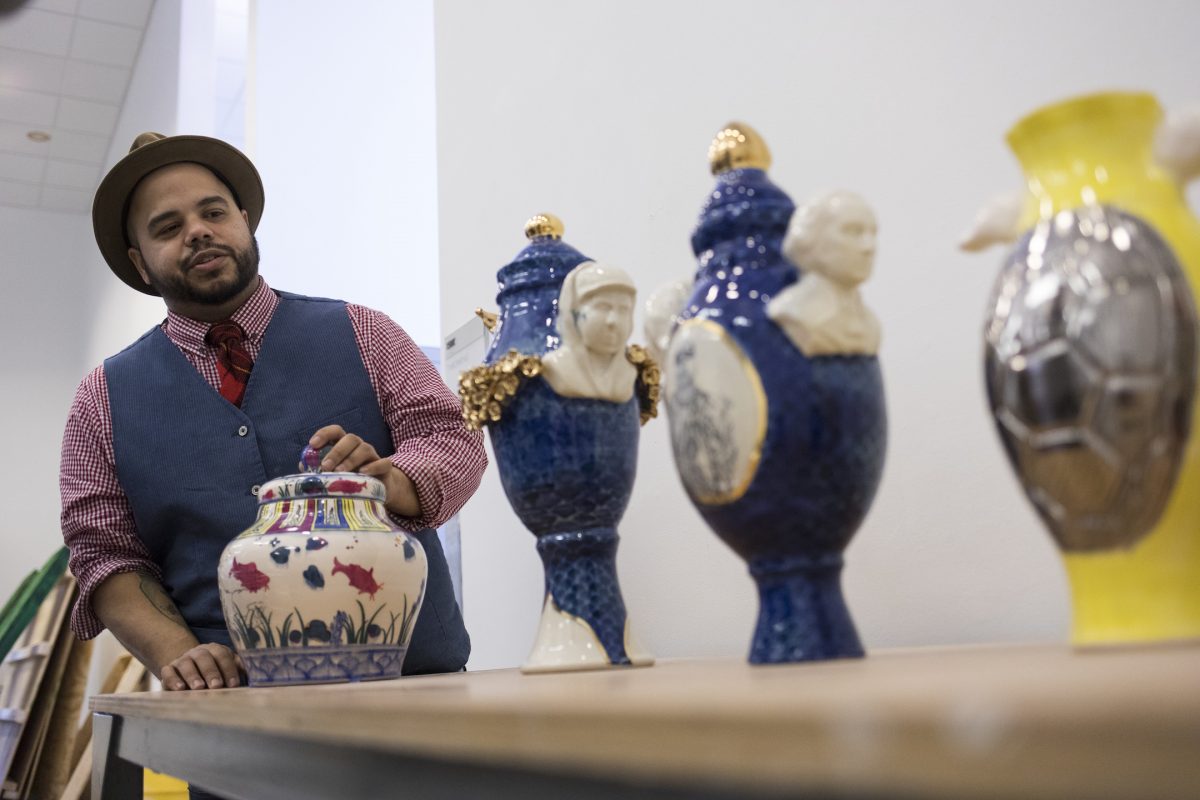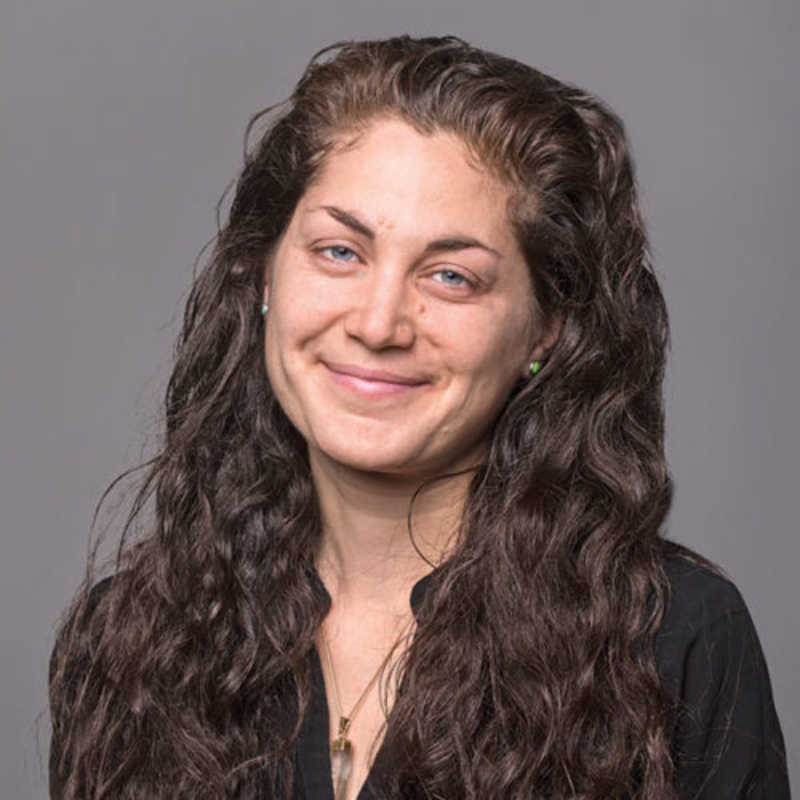
When curators revitalized a Walters Art Museum wing, unveiled in June as 1 West Mount Vernon Place, they were intentional about making a space that merges past with present—a contemporary palette on the walls of a historic mansion, a digitized collection of illuminated manuscripts on tablets in the decadent library, and ancient art displayed alongside pieces made specifically for the museum’s opening.
Featuring work by Philadelphia-based ceramic artist Roberto Lugo was a no-brainer. His vases (some several feet tall), dinnerware, and sculptures are exhibited throughout the building, depicting such cultural figures as Frederick Douglass, Freddie Gray, Colin Kaepernick, John Brown, and, most site-specific of them all, Sybby Grant, a slave who once worked in the kitchen at 1 West, under its original owners, the Thomas family.
“Here was someone making powerful work that spoke to the past and present at the same time,” says Alexander Jarman, who co-curated the work in 1 West with Eleanor Hughes.
Lugo borrows motifs and techniques from ancient Greece and Rome, as well as 17th-century French pottery—and really anything that strikes his fancy—but viewers don’t have to have a knowledge of art history to appreciate the beauty of his pieces. He sees that familiarity as a way into his work. “People will get a sense of seeing it before,” he says, adding that some—certainly art scholars—understand the context but often don’t relate to the cultural experiences in the work, and for others, the opposite is true.
Lugo grew up in a dangerous area of Philadelphia and first expressed himself artistically through graffiti. He had 57 first cousins, and all the males did graffiti, he says, so it was a way for him to connect with his family.
Wanting to escape a destructive life of drugs and gangs, he went to Orlando, Florida, when he was 20 to start anew—try to hold down a job for more than a few months, take some community college classes, stay out of trouble. He enrolled in art classes rather than something like English literature because he didn’t want to expose that he was poor and from the ghetto, he says.He took to ceramics quickly.
“The ceramics studio was always poppin’—music playing, people working,” he says. “I actually met my wife there.”
One of the first pieces he made was a fire hydrant, which hearkened back to his days growing up, when he and his father would shower in the water from a hydrant outside when their water got shut off.
He went on to earn a BFA from the Kansas City Art Institute and an MFA from Penn State University, and has since exhibited his work and given lectures throughout the country.
Lugo’s introduction to Baltimore came when he worked as an artist in residence at Baltimore Clayworks, where he taught art throughout the city at places like Jubilee Arts Center. He saw numerous connections between Baltimore and Philadelphia, he says, especially during the Freddie Gray protests.
A three-year timeline for the 1 West project allowed Lugo the luxury of talking with curators, seeing the space, and doing independent research to create pieces that engage with the history of the mansion as well as Baltimore.
“There’s a transparency there,” Lugo says. “We’re not hiding the fact that there were servants in the house.”
On one of his jars is the likeness of Freddie Gray. “People assume it’s political, but really what this is about is a person worthy of having an urn in their name,” Lugo says. “When a human being’s life is taken, it becomes really difficult to disagree with that.”
On Thursday, August 9, Lugo will be back at 1 West with artist Ezenwa “Shane” Wosu for an interactive performance event that explores the question, “Who gets a seat at the table?” It will take place in the dining room at a table with place settings made by Lugo—one of several installations within 1 West, which is considered by its creators to be one massive art installation.
“This is an opportunity for local audiences to connect with, and start a conversation about, our own local history,” Jarman says.
